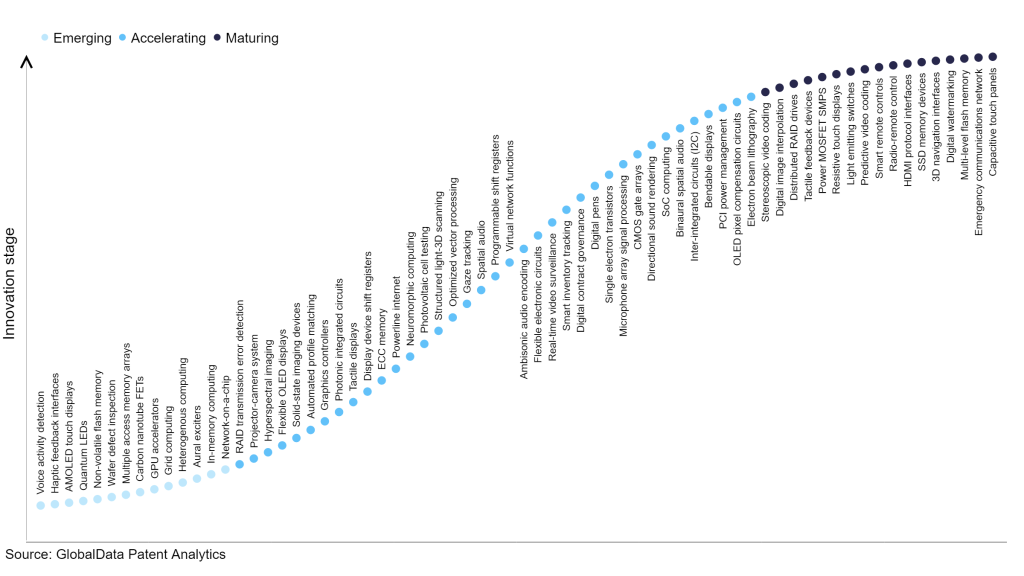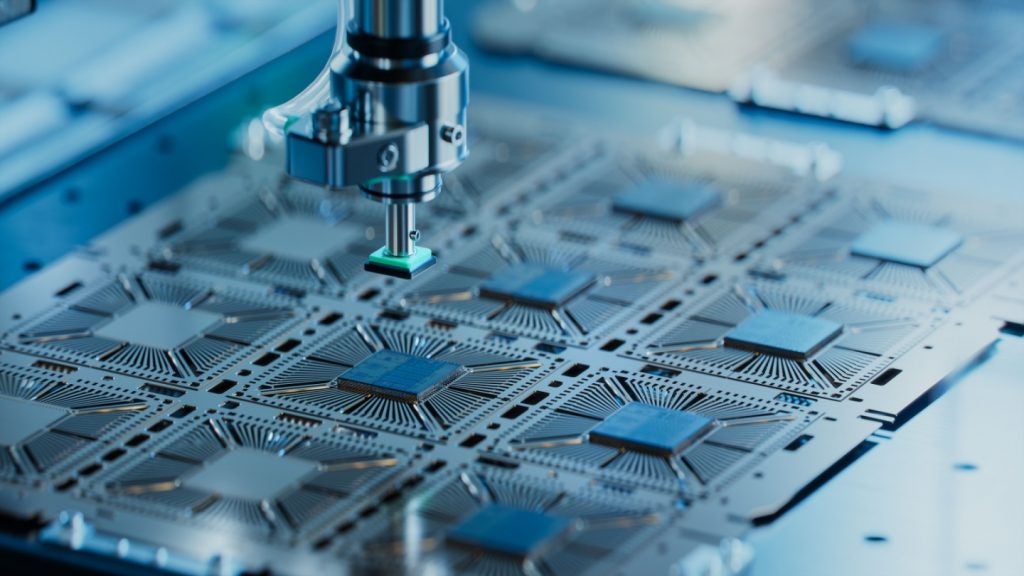The technology industry continues to be a hotbed of patent innovation. Activity is driven by the need for efficient supply chain management, the rise of e-commerce, and the increasing demand for automation in logistics and retail sectors, and growing importance of technologies such as RFID tags, IoT sensors, and data analytics to monitor and manage inventory levels in real-time. In the last three years alone, there have been over 4.1 million patents filed and granted in the technology industry, according to GlobalData’s report on Innovation in technology: smart inventory tracking. Buy the report here.
However, not all innovations are equal and nor do they follow a constant upward trend. Instead, their evolution takes the form of an S-shaped curve that reflects their typical lifecycle from early emergence to accelerating adoption, before finally stabilizing and reaching maturity.
Identifying where a particular innovation is on this journey, especially those that are in the emerging and accelerating stages, is essential for understanding their current level of adoption and the likely future trajectory and impact they will have.
190+ innovations will shape the technology industry
According to GlobalData’s Technology Foresights, which plots the S-curve for the technology industry using innovation intensity models built on over 1.5 million patents, there are 190+ innovation areas that will shape the future of the industry.
Within the emerging innovation stage, network-on-a-chip, in-memory computing, and aural exciters are disruptive technologies that are in the early stages of application and should be tracked closely. Electron beam lithography, OLED pixel compensation circuits, and PCI power management are some of the accelerating innovation areas, where adoption has been steadily increasing. Among maturing innovation areas are capacitive touch panels and emergency communications network, which are now well established in the industry.
Innovation S-curve for the technology industry

Smart inventory tracking is a key innovation area in technology
Smart inventory tracking entails employing cutting-edge technologies and systems for the efficient real-time monitoring and management of inventory. This encompasses the utilization of sensors, data analytics, and automated procedures to monitor the movement, quantity, and state of inventory items along the supply chain. This empowers businesses with precise and timely insights into their inventory, allowing for the optimization of storage, distribution processes, and reducing instances of stockouts or overstocking, ultimately enhancing overall operational efficiency.
GlobalData’s analysis also uncovers the companies at the forefront of each innovation area and assesses the potential reach and impact of their patenting activity across different applications and geographies. According to GlobalData, there are 150 companies, spanning technology vendors, established technology companies, and up-and-coming start-ups engaged in the development and application of smart inventory tracking.
Key players in smart inventory tracking – a disruptive innovation in the technology industry
‘Application diversity’ measures the number of applications identified for each patent. It broadly splits companies into either ‘niche’ or ‘diversified’ innovators.
‘Geographic reach’ refers to the number of countries each patent is registered in. It reflects the breadth of geographic application intended, ranging from ‘global’ to ‘local’.
Patent volumes related to smart inventory tracking
Source: GlobalData Patent Analytics
Among the companies innovating in smart inventory tracking, Walmart is one of the leading patents filers. The company’s patent describes the disclosed systems, methods, and tools monitor merchandise quantities in a retail setting by gauging changes in air displacement resulting from customer, employee, and shopping cart movement within the store. Air displacement sensors are strategically positioned, including near the products for sale. As customers take items, greater air displacement is detected. Each sensor is calibrated with a maximum threshold corresponding to the surrounding merchandise. Once enough products are removed, the threshold is met, triggering a signal to alert employees to restock the specified merchandise near the sensor. Some of the other prominent patent filers in the space include Dell Technologies and Trax Technology Solutions.
In terms of application diversity, Assa Abloy leads the pack, while Accel Robotics and Omnicell stood in second and third positions, respectively. By means of geographic reach, Weatherford International held the top position, followed by adidas and Canadian National Railway.
Smart inventory tracking is crucial in modern business operations as it enables real-time monitoring and management of stock levels. By leveraging advanced technologies like sensors and data analytics, businesses can optimize their supply chains, reduce costs, and ensure products are available when and where they are needed, ultimately enhancing operational efficiency and customer satisfaction.
To further understand the key themes and technologies disrupting the technology industry, access GlobalData’s latest thematic research report on Technology.
Premium Insights
From

The gold standard of business intelligence.
Blending expert knowledge with cutting-edge technology, GlobalData’s unrivalled proprietary data will enable you to decode what’s happening in your market. You can make better informed decisions and gain a future-proof advantage over your competitors.




